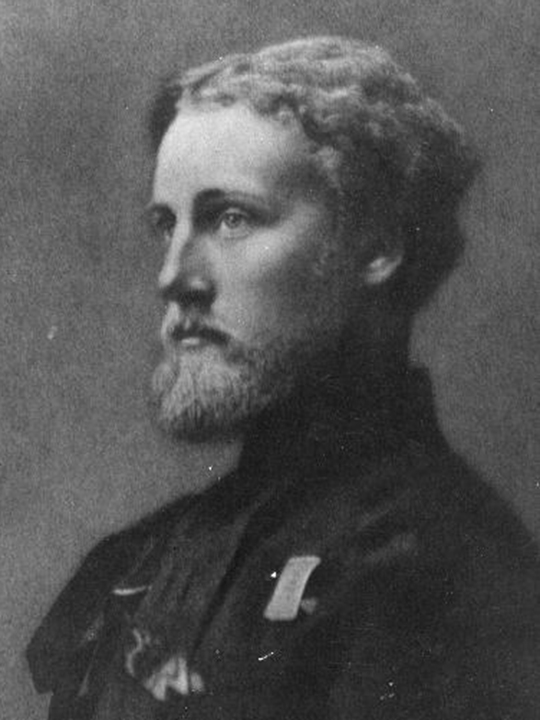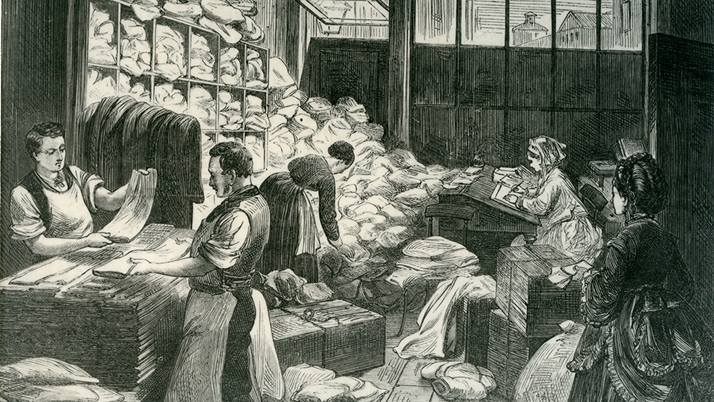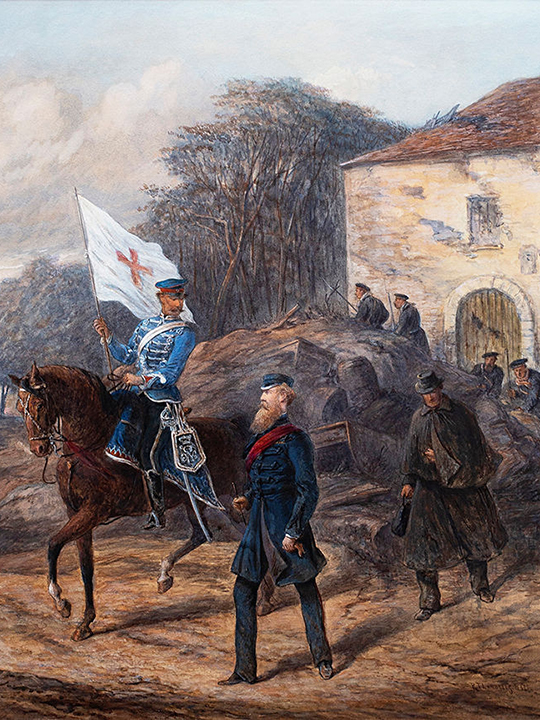The beginnings of the British Red Cross
Our museum and archives curator Mehzebin Adam explains how the British Red Cross began 150 years ago…
It all started with a letter to The Times. At the outbreak of the Franco-Prussian War in July 1870, Colonel Robert Loyd-Lindsay, a war veteran who had witnessed the suffering of soldiers in the Crimean War, believed that Britain should provide neutral aid to sick and wounded soldiers on both sides.
He wrote a letter sharing his views and calling for the formation of a voluntary aid society in Britain to join the global Red Cross movement. His letter was published in The Times newspaper on 22nd July 1870. Many influential people responded in support, and a significant amount of money was donated to the cause.

Robert Loyd-Lindsay
COPYRIGHT: British Red Cross Museums and Archives
At a public meeting held in London on 4 August 1870, a resolution was passed that “a national society be formed in this country for aiding sick and wounded soldiers in times of war and that the said Society be formed upon the rules laid down by the Geneva Convention of 1864.”
This was the start of the British Red Cross, originally the ‘National Society for Aid to the Sick & Wounded in War’.
A committee of 22 people was formed with Loyd-Lindsay as the first Chairman of the Society. Queen Victoria became Patron, and the Prince of Wales, later Edward VII, became President.
Princess Christian of Schleswig-Holstein became Chairman of the Ladies’ Committee which was made up of 49 women, and included Florence Nightingale and Harriett Loyd-Lindsay (Robert Loyd-Lindsay’s wife).

Volunteers in London packing linen bandages for the sick and wounded of the Franco-Prussian War, 1870
COPYRIGHT: British Red Cross Museum and Archives
Sir John Furley was one of the first in Britain to recognise the value of the Red Cross movement, and in fact had helped convince Robert Loyd-Lindsay to write that initial letter to The Times. He was a founding committee member of both the National Society and of St John Ambulance Association.
Aid to the sick and wounded
By the end of September 1870, a sum of nearly £200,000 (£24 million today) had been raised by the National Society for the sick and wounded of the Franco-Prussian War. It was decided that equal amounts of £20,000 (£2.4 million today) be given to both sides, the French in Paris and the Germans at Versailles.
The Society sent surgeons, nurses and other personnel to help sick and wounded soldiers. Money raised was also used to provide food, blankets, clothing and medical equipment.
Loyd-Lindsay played a personal role in the distribution of the funds, travelling between the French and German lines to make equal cash donations to both sides to help ease the conditions for the sick and wounded. In the painting above, Loyd-Lindsay is shown following a uniformed man on a horse carrying a Red Cross flag. He later reported that “the white flag with a red cross was honoured by soldiers and patients alike.”
After the Franco-Prussian War, Loyd-Lindsay continued his involvement with humanitarian causes and was raised to the peerage as Lord Wantage in 1885. He continued to serve the British Red Cross as Chairman until his death in 1901.

Painting showing Robert Loyd-Lindsay and his assistant delivering financial aid during the Franco-Prussian War in 1870. Artist: Robert Landells, 1875.
COPYRIGHT: British Red Cross Museum and Archives
150 years later…
The British Red Cross has been connecting human kindness with human crisis since 1870, helping people no matter who or where they are. Today, we continue to support people affected by war and conflict, as well as providing peacetime services such as wheelchairs and first aid training.
Most recently, as the coronavirus pandemic took hold, thousands joined the movement to support the most vulnerable. The humanitarian vision and commitment, of the people who helped form the British Red Cross 150 years ago, remains at the heart of the charity’s work today.
Disasters around the world
Whether it’s a disaster overseas or flooding in the UK, your donation means the Red Cross can be there whenever disaster strikes.
Donate